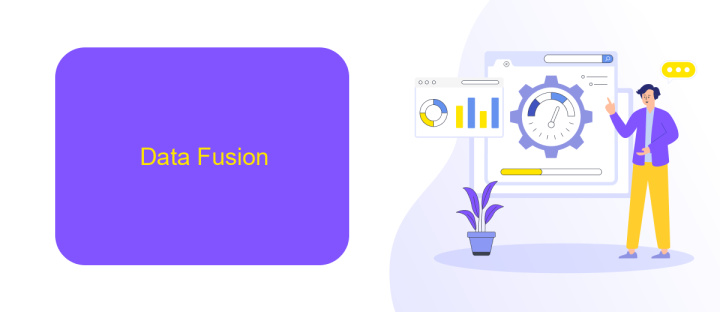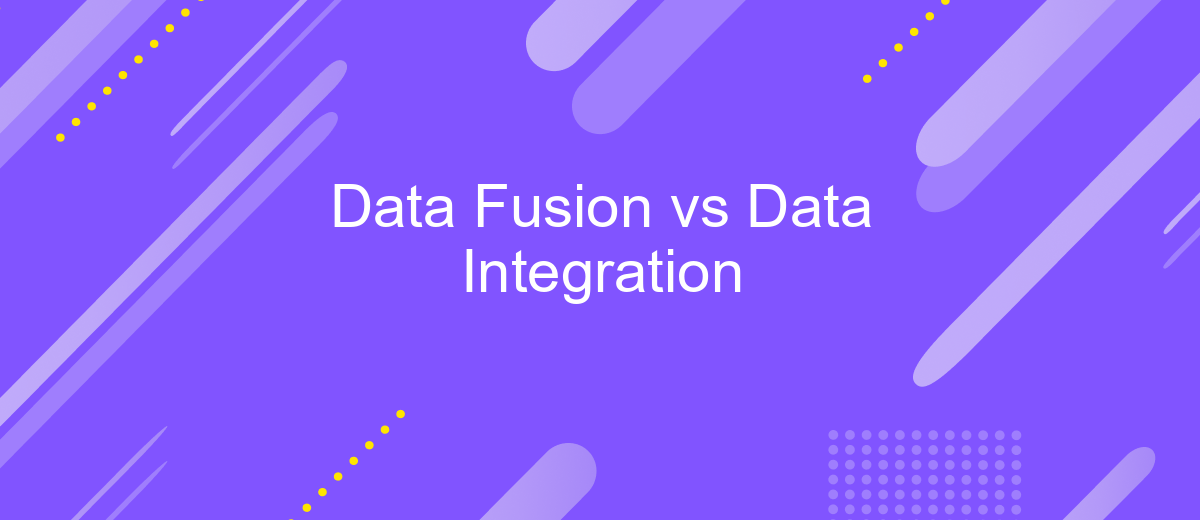Data Fusion vs Data Integration
Data Fusion and Data Integration are two pivotal concepts in the realm of data management, often used interchangeably but fundamentally different. While both aim to combine data from multiple sources to provide a unified view, their methodologies and applications vary significantly. This article delves into the distinctions between Data Fusion and Data Integration, exploring their unique processes, advantages, and use cases.
Introduction
In today's data-driven world, organizations need to efficiently manage and utilize vast amounts of information. Two key approaches that facilitate this are data fusion and data integration. Although often used interchangeably, these terms represent distinct processes with unique applications and benefits.
- Data Fusion: The process of combining multiple data sources to produce more consistent, accurate, and useful information.
- Data Integration: The process of merging data from different sources into a unified view, often using tools and platforms like ApiX-Drive to streamline the integration process.
Understanding the differences between data fusion and data integration is crucial for organizations aiming to optimize their data strategies. While data fusion focuses on enhancing data quality and consistency, data integration emphasizes creating a cohesive data environment. By leveraging services like ApiX-Drive, businesses can automate and simplify their data integration efforts, ensuring seamless and efficient data management.
Data Fusion

Data Fusion is the process of integrating multiple data sources to produce more consistent, accurate, and useful information than that provided by any individual data source. This technique involves aggregating data from various origins, such as databases, sensors, and applications, and combining them to create a unified view. The goal of data fusion is to improve data quality and decision-making by reducing redundancy, filling in missing information, and resolving conflicts between data sources.
One of the key challenges in data fusion is ensuring the seamless integration of disparate data types and formats. Tools like ApiX-Drive can facilitate this process by automating the data integration from various sources, ensuring that the data is harmonized and ready for analysis. ApiX-Drive offers a user-friendly interface to connect different applications and data sources, making it easier for organizations to achieve effective data fusion without extensive manual effort. By leveraging such tools, businesses can enhance their data-driven strategies and gain more comprehensive insights.
Data Integration

Data Integration is a crucial process that involves combining data from different sources to provide a unified view. It is essential for businesses to make informed decisions by leveraging comprehensive datasets. This process often involves ETL (Extract, Transform, Load) operations, where data is extracted from various sources, transformed into a consistent format, and loaded into a data warehouse or other storage systems.
- Identify data sources: Determine the various data sources that need to be integrated.
- Data extraction: Extract data from these sources using APIs, databases, or other methods.
- Data transformation: Cleanse and transform the data to ensure consistency and compatibility.
- Data loading: Load the transformed data into a centralized storage system.
- Data validation: Ensure the accuracy and integrity of the integrated data.
Tools like ApiX-Drive facilitate the data integration process by providing seamless connectivity between different applications and services. ApiX-Drive automates data transfer, reducing manual effort and ensuring real-time data synchronization. This enables businesses to maintain up-to-date datasets, enhancing their ability to analyze and derive insights efficiently.
Comparison

Data Fusion and Data Integration are two distinct methodologies used in data management, each with its own unique advantages and applications. Data Fusion involves the process of integrating multiple data sources to produce more consistent, accurate, and useful information than that provided by any individual data source. On the other hand, Data Integration focuses on combining data from different sources into a single, unified view for easier access and analysis.
While both approaches aim to enhance data utilization, they serve different purposes and are suited for different use cases. Data Fusion is often employed in scenarios requiring high levels of precision and reliability, such as in military and surveillance applications. Data Integration, however, is more commonly used in business environments for tasks like reporting and business intelligence.
- Data Fusion: Emphasizes accuracy and consistency.
- Data Integration: Focuses on unifying data for accessibility.
- Data Fusion: Suitable for high-stakes environments like defense.
- Data Integration: Ideal for business analytics and reporting.
For organizations looking to streamline their data integration processes, services like ApiX-Drive offer valuable solutions. ApiX-Drive simplifies the setup of integrations between various applications and data sources, making it easier for businesses to achieve a cohesive and comprehensive data view. By leveraging such tools, companies can enhance their data management capabilities and drive more informed decision-making.


Conclusion
In conclusion, the distinction between data fusion and data integration is crucial for organizations aiming to leverage their data effectively. Data fusion focuses on merging multiple data sources to create a singular, enriched dataset, often used in applications requiring high accuracy and real-time decision-making. On the other hand, data integration involves combining data from various sources into a unified view, making it essential for comprehensive data analysis and reporting.
For businesses seeking to streamline their data integration processes, services like ApiX-Drive offer invaluable assistance. ApiX-Drive simplifies the setup of integrations between different platforms, ensuring seamless data flow and reducing the technical burden on IT teams. By leveraging tools like ApiX-Drive, organizations can enhance their data management capabilities, ultimately driving better insights and more informed decision-making.
FAQ
What is the main difference between Data Fusion and Data Integration?
Why is Data Fusion important in modern analytics?
Can Data Fusion and Data Integration be used together?
What are some challenges associated with Data Integration?
How can businesses automate their Data Integration processes?
Do you want to achieve your goals in business, career and life faster and better? Do it with ApiX-Drive – a tool that will remove a significant part of the routine from workflows and free up additional time to achieve your goals. Test the capabilities of Apix-Drive for free – see for yourself the effectiveness of the tool.

